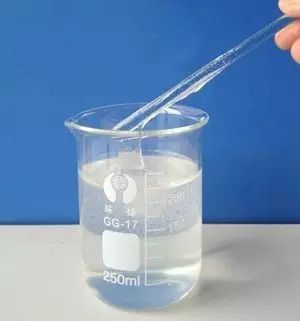Water retention of hydroxypropyl methyl cellulose
 Hydroxypropyl methylcellulose (HPMC) is a non-ionic cellulose ether prepared from natural polymer cellulose through a series of chemical processing. Hydroxypropyl methylcellulose (HPMC) is an odorless, tasteless and non-toxic white powder, which can be dissolved in cold water to form a transparent viscous solution. It has the properties of thickening, adhesion, dispersion, emulsification, film-forming, suspension, adsorption, gelation, surface activity, water retention and colloid protection. In mortar, hydroxypropyl methylcellulose plays an important role, that is, water retention, that is, the ability of mortar to preserve water.
Hydroxypropyl methylcellulose (HPMC) is a non-ionic cellulose ether prepared from natural polymer cellulose through a series of chemical processing. Hydroxypropyl methylcellulose (HPMC) is an odorless, tasteless and non-toxic white powder, which can be dissolved in cold water to form a transparent viscous solution. It has the properties of thickening, adhesion, dispersion, emulsification, film-forming, suspension, adsorption, gelation, surface activity, water retention and colloid protection. In mortar, hydroxypropyl methylcellulose plays an important role, that is, water retention, that is, the ability of mortar to preserve water.

1. Importance of water retention for mortar
Mortar with poor water retention is prone to bleeding and segregation during transportation and storage, that is, water floats above and sand and cement sink below. It must be re mixed before use. For the mortar with poor water retention, as long as the ready mixed mortar contacts with the block or base course, the water will be absorbed from the ready mixed mortar. At the same time, the water will evaporate from the mortar surface facing the atmosphere, resulting in insufficient water for the mortar due to water loss, affecting the further hydration of cement and the normal development of mortar strength, resulting in strength In particular, the interface strength between the mortar hardened body and the base becomes low, resulting in mortar cracking and falling off.
2. Traditional methods to improve water retention of mortar
The traditional solution is to water the base course, but it is impossible to ensure that the base course is evenly and properly wetted. The ideal hydration goal of cement mortar on the base course is that the cement hydration products penetrate into the base course with the process of water absorption by the base course, forming an effective "key connection" with the base course, so as to achieve the required bonding strength. Direct watering on the surface of the base course will seriously disperse the water absorption of the base course due to different air temperature, watering time and watering uniformity. The base course has little water absorption and will continue to absorb the water in the mortar. Before the cement hydration, the water will be absorbed, affecting the cement hydration and the penetration of hydration products into the matrix; The water absorption of the base course is large, the migration speed of water in the mortar to the base course is slow, and even a rich water layer is formed between the mortar and the matrix, which also affects the bond strength. Therefore, the common base watering method can not effectively solve the problem of high water absorption of wall base, but will affect the bond strength between mortar and base, resulting in hollowing and dry crack.
3. High efficiency water retention
The excellent water retention performance makes the mortar open longer, with the advantages of large-area construction, long service time in the barrel, batch mixing and batch use;
Good water holding performance can make the cement in the mortar hydration fully and effectively improve the bonding performance of the mortar;
The mortar has excellent water retention performance, which makes the mortar not easy to produce segregation and bleeding. Now, the workability and constructability of the mortar are improved.
{aspcms:comment}





